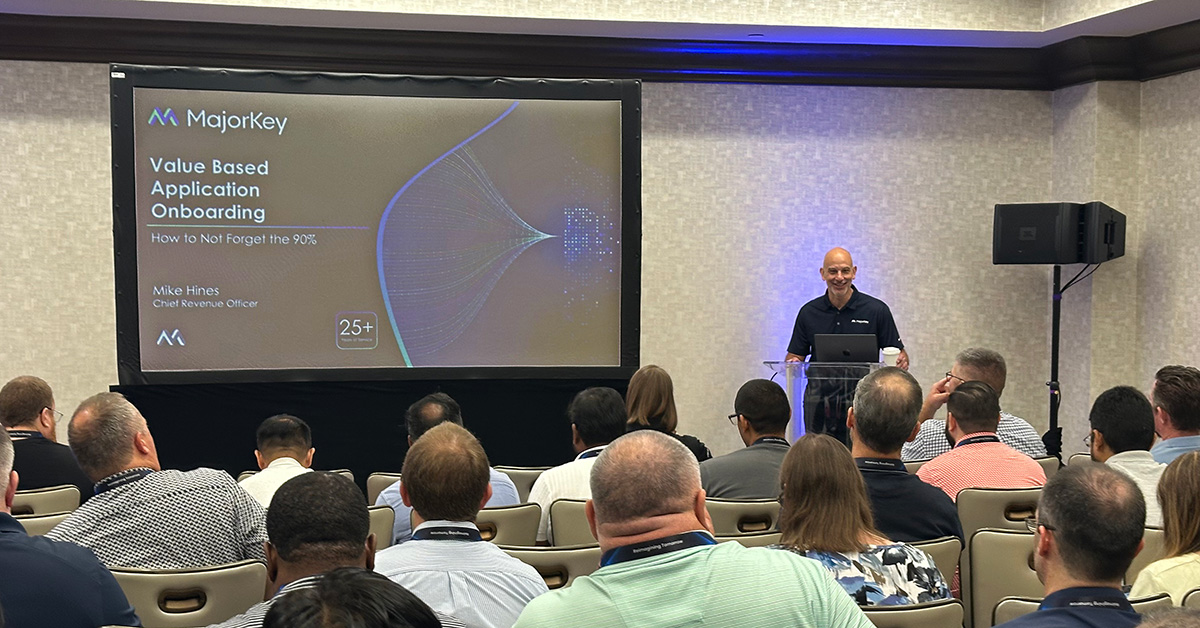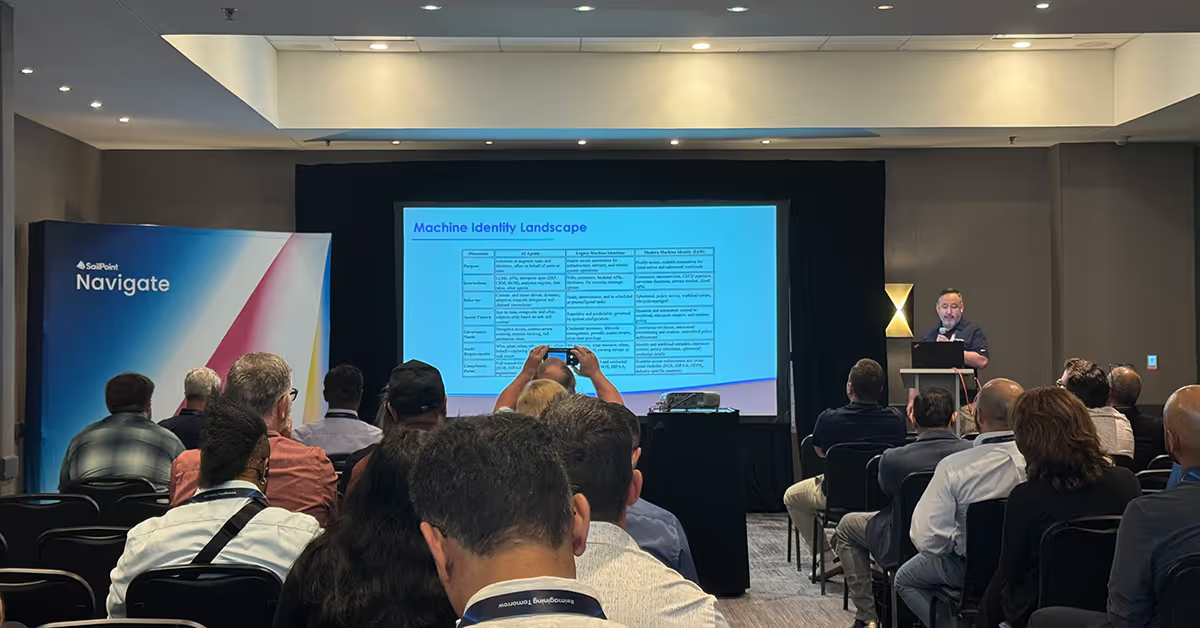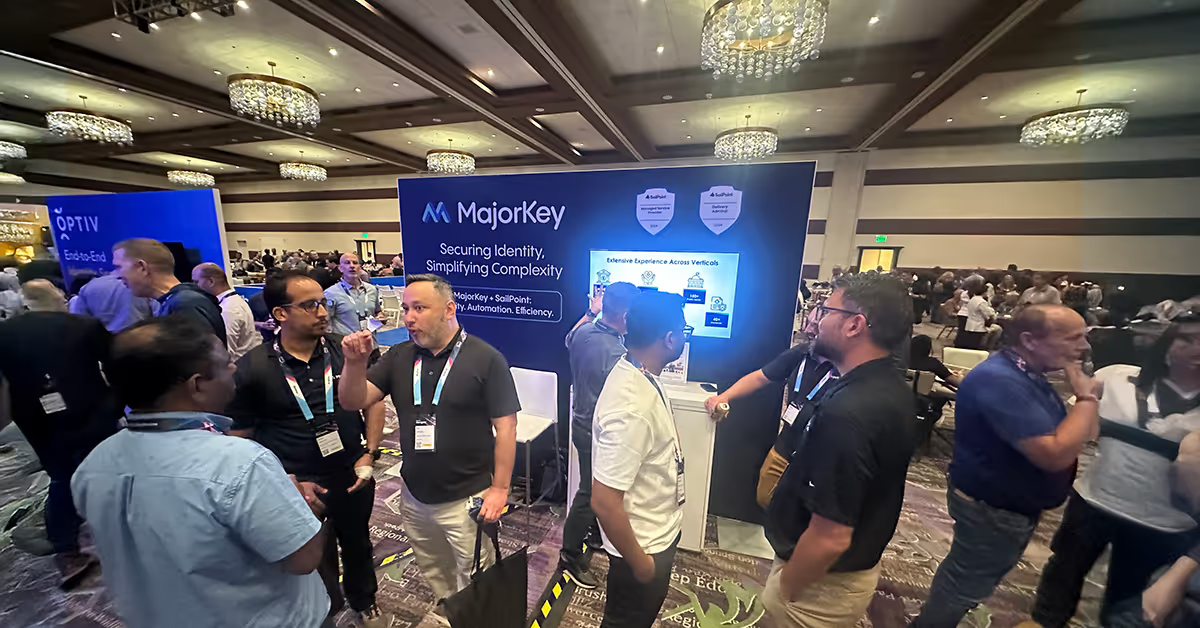Identity Federation and Its Importance in Modern IAM
February 6, 2024
|
Duration:
5
min READ

Now more than ever, interconnectivity defines daily life for individuals and organizations alike. This is especially true when it comes to identity federation, a concept that builds on Single Sign-on (SSO) to revolutionize how digital identities can be leveraged to access multiple systems.
In this post we’ll break down the concept of identity federation, explaining how it works, a real-life example of identity federation in action, business use cases, and its importance for modern IAM.
What is identity federation?
Identity federation is a method of linking a single user identity across multiple separate identity management systems. It helps users rapidly shift between systems while still maintaining a high level of security. Think of it as a digital passport system, but instead of being granted access to multiple countries, you’re being granted access to different digital systems and domains.
How identity federation works
At its core, Identity Federation hinges on trust between different security domains to simplify access management across different systems and domains.
Here is how it works:
- Trust is established: Organizations agree to trust each other's authentication processes. This involves setting up agreements and configuring systems to recognize each other's authentication tokens.
- User is authenticated: When a user attempts to access a service in a different domain, their home domain (where their credentials are stored) authenticates them. This process involves verifying the user's identity against the stored credentials.
- Tokens are exchanged: Upon successful authentication, the home domain generates a token (like a digital certificate or a security assertion) containing the user's identity information.
- User is granted access: This token is then sent to the service the user wants to access. The service, trusting the token from the federated domain, grants access without requiring the user to log in again.
By using standards like SAML, OAuth, or OpenID Connect, identity federation allows for secure, efficient, and seamless access across separate platforms with the goal of enhancing user experience and security simultaneously .
Real-life example of identity federation in action
Imagine there’s a new travel website you want to sign up for. Rather than creating a new account with the travel website, you see an option to login with Google. When you click this option, you’re briefly redirected to Google, which asks if you’re okay sharing your basic information with the website.
Once you agree, Google verifies your identity and the website lets you in without ever have to create a new username or password.
In this scenario, Google and the travel website have an agreement to trust each other's user verification. Google confirms who you are, and the game accepts this without making you go through another sign-up process. This seamless experience of using your Google credentials to access a new service is a practical example of how identity federation works.
The importance of identity federation in modern Identity and Access Management (IAM)
Identity Federation offers multiple key benefits for modern IAM:
- Single Sign-On (SSO): Users can log in once and gain access to multiple applications and services, eliminating the need for multiple usernames and passwords, enhancing user convenience and efficiency.
- Improved Security: By reducing the number of credentials required, identity federation minimizes the risk of password-related security breaches. It also ensures that authentication is handled by a trusted source, thereby enhancing overall security.
- Reduced IT Overhead: With fewer user credentials to manage, the burden on IT departments decreases. This leads to lower costs in managing user accounts and resets, reducing the likelihood of help desk calls for simple password issues.
- Enhanced User Experience: Users enjoy a smoother, more integrated experience across different services and platforms, leading to higher satisfaction and productivity.
- Regulatory Compliance: Identity federation can help organizations comply with data protection regulations by centralizing and standardizing user access controls and audit trails.
- Scalability and Flexibility: As businesses grow and technologies evolve, identity federation allows for easier integration with new applications and services.
- Reduced Credential Fatigue: Users are less likely to employ weak passwords or repeat the same passwords across services, as the need for multiple credentials is minimized.
- Interoperability Between Organizations: It facilitates seamless collaboration between different organizations or business units, enabling secure and efficient access to shared resources.
Final Thoughts
Identity federation in IAM streamlines access management across diverse platforms while bolstering security and improving both the user and administrative experience.
Authors

No items found.
Advisory
No items found.
.svg)



















.svg)
